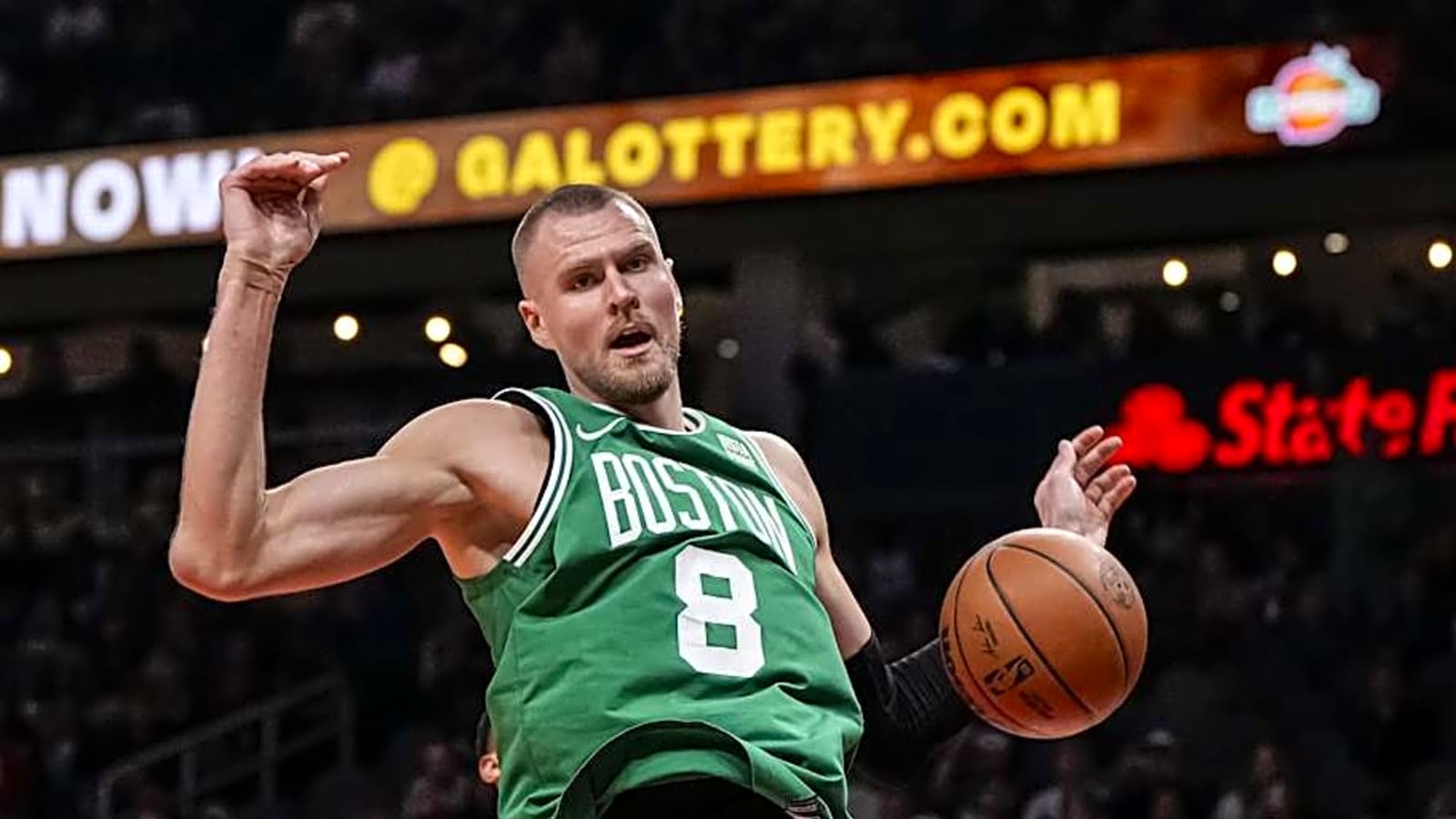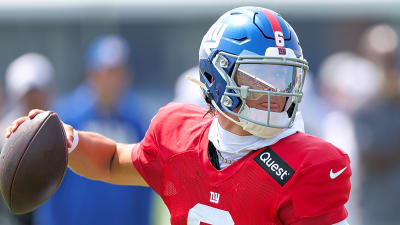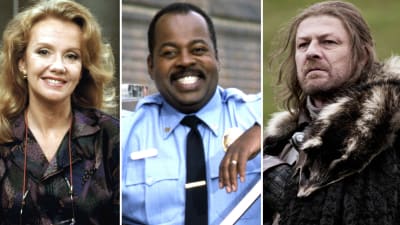
On paper, there shouldn't be any argument that the Atlanta Hawks made major improvements to their lineup.
After trading for Celtics big man Kristaps Porzingis and drafting Georgia power forward Asa Newell, Atlanta reached a pair of huge free agent signings. The Hawks signed a marquee free agent in Wolves guard Nickeil Alexander-Walker to a four-year, $62 million deal in a sign and trade that sent a 2027 2nd-round pick (via CLE) to the Wolves. Then, the Hawks signed free agent guard Luke Kennard to a one-year, $11 million deal. Outside of the big acquisitions mentioned above, they also made some interesting margin moves by adding Caleb Houstan from the Orlando Magic as a bench sharpshooter and signing Nikola Durisic to a standard contract. While they did also get an unprotected first-rounder from the Pelicans next season, that won't directly affect their 2025-26 season and therefore shouldn't be considered as a true offseason acquisition.
However, which one of these moves has the most potential to pay off big in 2025-26?
No. 6 - Nikola Durisic
Durisic was drafted by the Hawks last season and played in the 2024 Summer League, but he didn't play any regular-season games for Atlanta and therefore will be a new addition to the 2025-26 roster. His player profile is interesting - the 6'8 wing has some fans due to his passing ability. Coming out of KK Mega Basket in Serbia, he averaged 4.8 assists as a playmaker for his team and drew fouls at an above-average rate. However, he struggled with turnovers, and it seems that he'll be more of a secondary or tertiary playmaker at the NBA level.
In 2025 Summer League, he looked more comfortable. Through the first three games, he averaged 13.3 points per game, three rebounds, and four assists on 50/33/84% shooting splits. He's not a great floor spacer and he struggles with turnovers, but there's a chance he can be a rotation wing for the Hawks as he develops. He's a interesting candidate to become a backup SF for the Hawks this year.
#5 - Caleb Houstan
Outside of being the tallest active player to have never dunked in an NBA game, Houstan is more likely to impact the roster in 2025-26 than Durisic purely because he can swing games due to his shooting. Orlando finished the 2024-25 season last in 3P%, but Houstan was probably their most reliable shooter. He shot 40% from beyond the arc on 2.8 attempts per game and there's reason to believe that number can rise next season. Garrison Mathews earned the "Garry Bird" moniker because of how he was able to occasionally swing games due to getting hot from deep. Houstan could occupy a similar role, and there's even some upside for more, considering that he's only 22 years old.
The Hawks already have a pretty crowded wing rotation, but Houstan gives them another intriguing flyer at that spot who comes with NBA experience. I also believe a little more in Houstan's defense due to his hustle on that end and his 6'11 wingspan. He doesn't really do much else other than shoot, but that's a valuable skill to have in the regular season.
#4B - Asa Newell (tie)
Projecting a rookie for a significant role, especially one drafted outside of the lottery, is always risky because most rookies are not good and they often need time to adjust to the NBA. Zaccharie Risacher was taken with the top selection in the 2024 draft and didn't really begin to come along until the second half of the year. That's especially true in the frontcourt - many wings don't come into their own until they have multiple seasons under their belt. It's entirely possible that Newell doesn't make much of an impact in 2025-26 and still goes on to have a very productive career. He's only 19 years old and he'll need time to adjust to the NBA.
However, Newell's profile and Summer League production gives me some pause before dismissing him as a contributor. At Georgia, he played at center due to being 6'10 with a 6'11 wingspan. Despite not having overwhelming size, he averaged 15.4 points and 6.9 rebounds on 54.3/29.2/74.8% shooting splits. He dominated inside the paint, shooting 72.8% at the rim, while thriving as a help defender and rebounder. He brings connective skills on both ends of the court - he's a great cutter and has the foot speed to keep up with wings on the perimeter. One of the big questions about his game was his shooting, but his jumper looked NBA-viable in Las Vegas. In the first four games of Summer League, he averaged 13.5 points and 8.2 rebounds on 51% shooting from the field and 42% shooting from three-point range. He took 3.5 threes per game, so this production is coming on respectable volume.
Maybe it's premature, but I think Newell can be impactful for the Hawks especially because of the injury risks associated with Jalen Johnson and Kristaps Porzingis. Young has done well with players of his archetype before - see John Collins. Furthermore, Atlanta's season has gone off the rails for two straight years because they lack players with PF size to cover up for Johnson's absence. Expecting him to be Johnson is ridiculous, but there's a possibility Newell can survive as a lob threat on offense while playing solid defense for the stretch of games that Johnson misses. If he does that, there's no question he'd be one of the more critical players for the Hawks this year.
#4A - Luke Kennard (tie)
Of the three veteran acquisitions the Hawks made, I'm the lowest on Kennard's potential impact. To be clear, he's still a useful player to have on the roster. Even in a down season during the 2024-25 campaign, he shot 43.3% from deep on 4 attempts a game. He hasn't shot under 40% from deep in five seasons and the volume with which Kennard lets it fly is formidable. He's in the 90th percentile for three-point frequency among all guards and he takes difficult threes as well. He shot a staggering 52% on corner threes last season while finishing in the 80th percentile for taking those shots. It's not hard to see how a catch-and-shoot weapon like Kennard can thrive in Atlanta, especially playing off of Trae Young.
The other nice thing about Kennard's game is that he's a solid passer. Once Jalen Johnson went down, this team lacked reliable ball-handlers outside of Trae Young and it allowed defenses to ramp up their coverage of Young. Kennard finished in the 89th percentile for AST:USG ratio, meaning that he was a positive connective passer for the Grizzlies. The results would probably be less successful if he was the primary initiator in a lineup, but he can make the basic reads and find open teammates as a secondary ball-handler.
The limiting factor with Kennard's impact is his defense. He's 6'5 and has the size to at least compete on that end, but he's someone who can be targeted on defense in extensive minutes. He doesn't generate a lot of seperation and needs to be set-up. That's a problem in postseason basketball. To be clear, it's not fair to say Kennard has no role on a good team. Memphis's 2022 series against the Lakers is a good depiction of this - he was a major reason why the Grizzlies won Game 5 of that series due to his shooting gravity pulling defenders away from Ja Morant and Desmond Bane. When his shot isn't hitting and the other team can target him on defense, look no further than the Grizzlies first-round series against the Thunder to find evidence of how Kennard can be a liability in the playoffs. He finished the series shooting 22.2% from deep against OKC while averaging 4.5 points and two assists. While the Thunder had a historically great perimeter defense, it's worth considering the downside when assessing Kennard's potential impact on this roster. He should be a solid regular-season player as the eighth man, but he can't get a heavy dose of postseason action if the Hawks want to make a deep run.
#2 - Nickeil Alexander-Walker
Considering how terrible the Hawks' perimeter defense has been as of late, the addition of Nickeil Alexander-Walker might be one of the most exciting moves of the offseason. The 6'5 shooting guard is, simply, one of the best on-ball defenders in the NBA. He's great at navigating around ball screens, gets into passing lanes and handles tough assignments on the perimeter routinely. Pairing him with Dyson Daniels is a terrifying thought for opponents and I'd expect the Hawks to try lineups with both of them in order to grind opposing offenses to a halt. NAW also brings above-average shooting, hitting 38.1% of his threes on 4.5 attempts and thriving on catch-and-shoot looks. Again, this profile should fare well with Trae Young and gives the Hawks' star PG another shooter to kick it out to when he drives into the paint.
He isn't the most consistent postseason player, but he had a 23-point game for the Wolves in the conference finals against OKC and he closed games for them in the fourth quarter due to his reliable defense and solid offense. He can be a role player on a championship-caliber team and he should be a highly effective reserve for the Hawks.
#1 - Kristaps Porzingis
The state of the Eastern Conference is such that a healthy Kristaps Porzingis could elevate the Hawks into making another ECF run. He was one of the linchpins for Boston's 2024 championship run due to his impact in the regular season, the first round and the start of the 2024 Finals. Since he's essentially replacing Georges Niang in the lineup, it's hard to state the difference that he can provide on defense. When healthy, he's one of the best rim protectors in the league as a drop-coverage big who can completely erase the paint. He has the size to go up against bigs like Jarrett Allen and Karl-Anthony Towns, both of whom the Hawks will likely have to go through if they want to make a deep postseason run. He has his struggles on the perimeter, but the beauty of having a player like Porzingis on the roster is that a more mobile big like Onyeka Okongwu, Asa Newell or Mo Gueye can be used to complement him in double-big lineups.
That is because behind Towns, Porzingis is the best big-man shooter in the NBA. He shot a career-best 41.2% from deep on six attempts a game last season, so he's not slowing down as a shooter. Part of that comes from playing with excellent spacing in Boston, but there's no reason he can't shoot above 37% from deep on significant volume while playing off the gravity of Trae Young. Atlanta also has a center in Okongwu who can play enough minutes to keep Porzingis as a hyper-effective sixth man who can be used sparingly throughout the regular season and unleashed in the playoffs.
Of course, the major caveat with all this is his health. It's almost a given that Porzingis will miss 15+ games in the regular season, but the Hawks can plan around this if they deploy their rotation in the correct fashion. If he plays around 60 games during the regular season and shows up for a majority of Atlanta's playoff games with decent health, it's hard to dismiss the potential of this team. He's the marquee addition for the Hawks this summer and he'll be especially motivated to play well due to his deal expiring at the end of the year. At only 30 years old, he has plenty of basketball left in his career and his 2025-26 season could be one of his most impressive years - health permitting.
More Atlanta Hawks News:
More must-reads:
- Report: Teams reluctant to discuss key offseason move with Bulls
- Warriors 'unlikely' to pivot from Jonathan Kuminga this summer
- The 'NBA minutes leaders by season' quiz
Breaking News
Trending News
Customize Your Newsletter
 +
+
Get the latest news and rumors, customized to your favorite sports and teams. Emailed daily. Always free!








